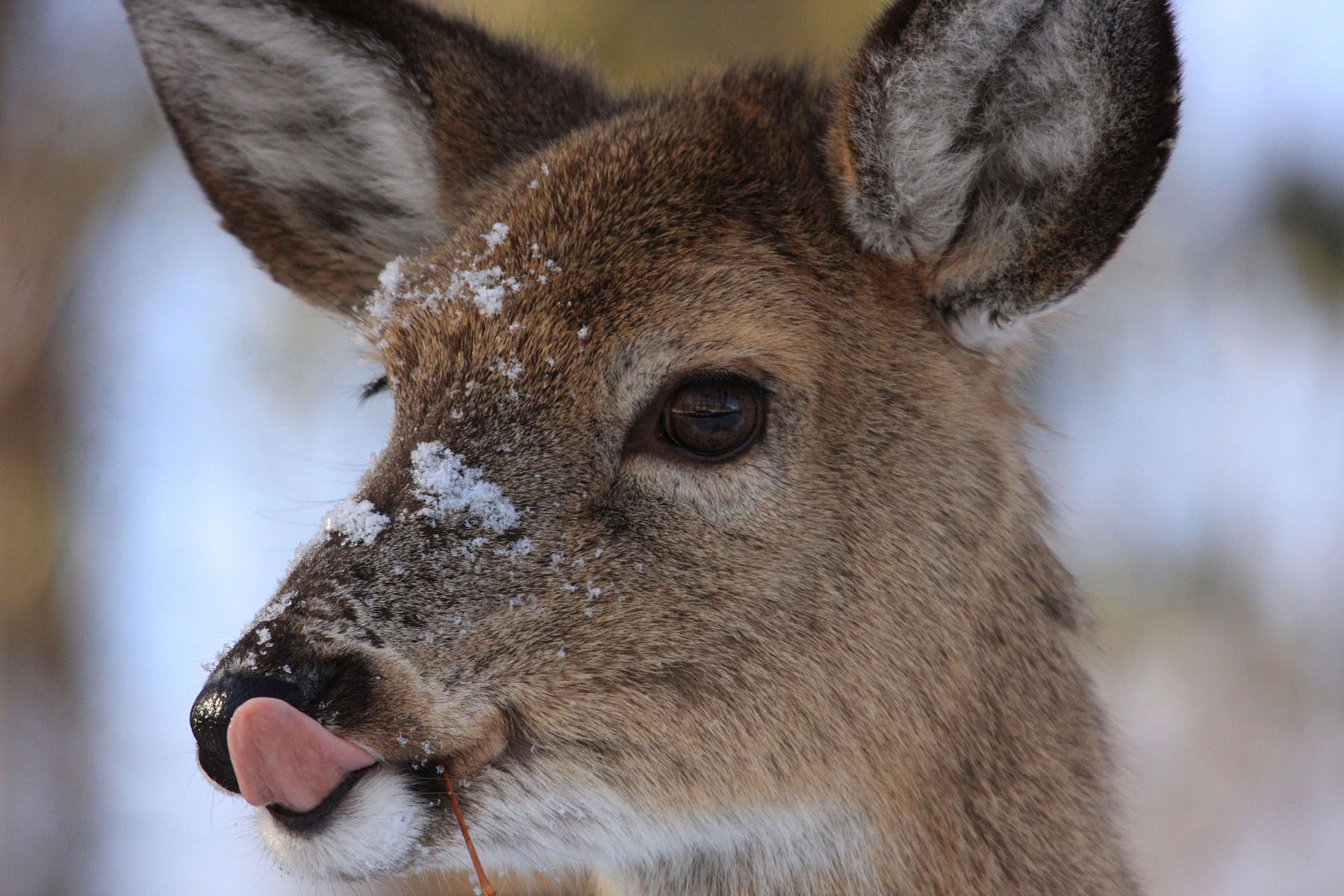

Warning: the photos below may be disturbing for some people.
Forensic scientists have to do a lot of weird things in order to solve crimes and identify bodies. Sometimes that involves leaving corpses outside to rot, to better understand what happens during and after decomposition. In fact, there are entire facilities devoted to studying the decay of donated human remains, like the 26-acre Forensic Anthropology Research Facility (FARF) in San Marcos, Texas.
In July 2014, researchers left a body in a wooded part of FARF. They wanted to learn about how different scavengers leave their marks on human remains, so they set up a motion-sensitive camera to see who would stop by. In this part of Texas, it’s not unusual to see foxes, turkey vultures, raccoons, coyotes, and other carrion-gobblers picking at a corpse. But after a few months, someone new came to the table.

On January 5, 2015, the camera caught a glimpse of a young white-tailed deer standing near the skeleton with a human rib bone in its mouth. Then it happened again on January 13—the camera caught a deer with another rib sticking out of its mouth like a cigar. It’s not clear whether it was the same deer in both cases, but it’s certainly possible first one came back for seconds.
This is the first known evidence of a deer scavenging human bones, and the authors published their findings in the Journal of Forensic Sciences.

It is not, however, the first time we’ve seen deer violating their vegetarian diets. In fact, they’re known to have a taste for blood. Previously they’ve been spotted eating fish, bats, and dead rabbits. Scientists think deer and other herbivores may occasionally seek out flesh to get minerals—such as phosphorus, salt, and calcium—that may be missing from their regular diets, especially in wintertime.
The paper describes the signs of deer dining, in case it helps other forensic scientists in investigating suspicious deaths. Based on this case study and the way deer have been known to forage animal carcasses, the authors note that the ungulates tend to seek out dry bones of long-dead animals, and in particular bones with a rectangular cross-section. They cause the most damage on the ends of the bone, where the zigzag motions of their jaws leave behind a “stripped, forked pattern in the bone,” the authors note. Carnivores, by contrast, seek out fresher remains and leave punctures and pits in the bone.
Although it’s likely rare for deer to munch on human remains, being able to recognize the signs of ungulate gnawing may help investigators pinpoint where a body came from and how long it’s been dead—which could help turn a mysteriously mangled crime scene into a solved case.
